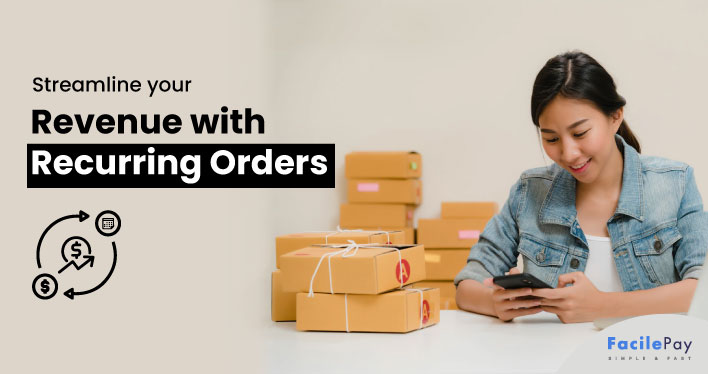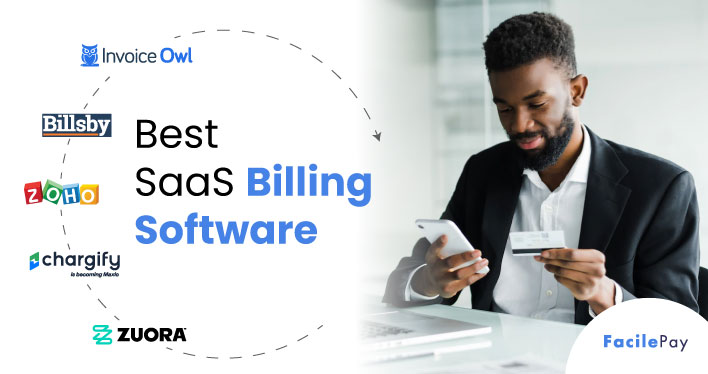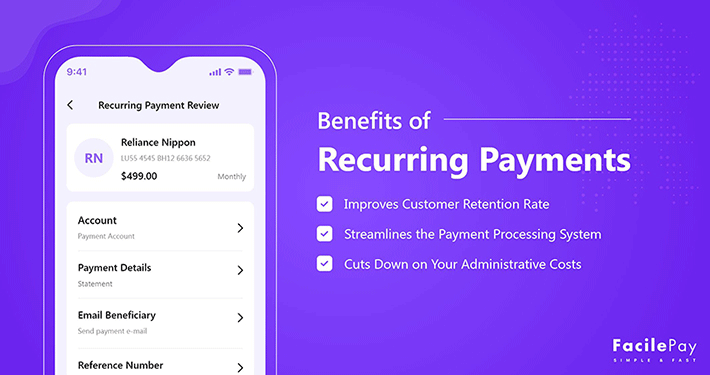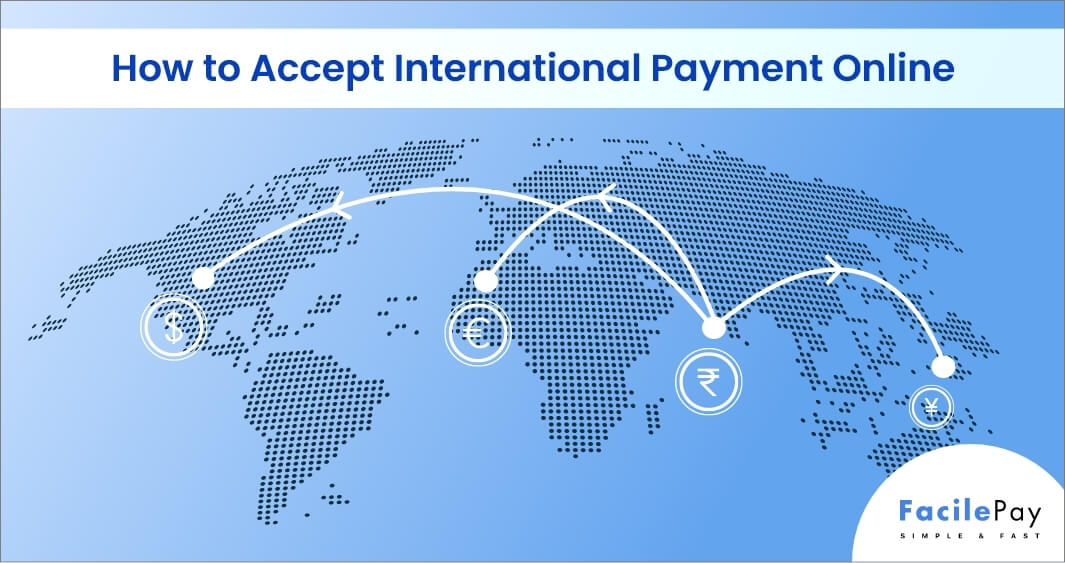- Recurring orders are a way for customers to regularly receive a product or service without having to manually place an order every time.
- The recurring order process can be automated through various software tools and platforms.
- Offering recurring orders can increase customer loyalty and revenue for businesses.
- Businesses should ensure they have the necessary infrastructure and resources to support recurring orders, such as inventory management and customer support.
📝Key Takeaways:
If you are a small business owner, you will be always looking to maximize the cash flow with returning customers.
However, it may be frustrating to
- Send reminders and still, face missed payments within the said time.
- Track transactions and tally your revenue and sale.
Solution?
Setting up recurring orders for your product/services will benefit your business.
Here in this blog, you will learn:
- What are recurring orders?
- How are recurring orders different from one-off purchases?
- Why should you use recurring orders for your business?
Let’s get started.
Contents
- What are Recurring Orders? [+ Examples]
- Recurring Orders Vs. One-Off Purchases [Which Model to Choose for Your Business?]
- What are the Benefits of Using Recurring Orders for Your Small Business?
- What do You Need to Set up Recurring Payments?
- 4 Popular Examples of Recurring Orders
- Frequently Asked Questions About Recurring Orders
- Ready to Leverage Recurring Orders for Your Business?
What are Recurring Orders? [+ Examples]
Recurring orders mean consumers subscribe to your product for a fixed interval instead of purchasing one at a time. Recurring orders are also called subscriptions.
For instance: When a customer purchases a product with a monthly cycle type, the system will set up an order for every month. The system automatically uses credit-card details to process subsequent payments.
Customers’ orders are created well into the future. These orders are then automatically processed at predetermined intervals. With recurring orders, the customers can refrain from visiting a store to get the regular item and add it to the cart.
You’ll be charged for each order only when the item is shipped. The amount charged each time will reflect the price of the item on the day the order is processed. Let’s quick check how recurring orders are different from one-off purchase.
Recurring Orders Vs. One-Off Purchases [Which Model to Choose for Your Business?]
Let us understand how recurring orders fare against one-off purchases to decide which model offers more growth.
| Comparison Factor | Recurring Orders | One-off Purchases | Which is the Best? |
|---|---|---|---|
| Definition | A consistent revenue stream for businesses due to customer retention. | If customers move away from the service after a one-time transaction, then profits are affected. | NA |
| Time | In recurring orders initial setting up is time intensive. | In one-off purchases, no setup is required initially. | One-off purchases |
| Forecast | It can easily predict the number of products or services that will be sold in the future based on the number of active subscriptions. Forecasting profits is also easier. | Harder to maintain inventory or forecast profits when you cannot predict how many products will be sold. | Recurring orders |
| Support | Recurring orders are automated services so less managing is needed. | One-off purchases might require manual support. | Recurring orders |
You have understood how recurring payment is better than a one-off purchase. Let’s understand the benefits better by diving into how successful businesses leverage the recurring order model.
What are the Benefits of Using Recurring Orders for Your Small Business?
Here are the three benefits of using recurring orders for your business.
1. Increased Customer Retention by Repeat Orders
Given the technological advancements, high competition, and endless options, the number one problem that businesses face is customer retention. Acquiring new customers requires businesses to frequently implement expensive marketing campaigns. This is taxing for new businesses that compete against industry giants.
Recurring payment models help bridge this gap and bring the business and customer closer than ever before. Once set up, the model of the recurring order reaps much more benefits than the traditional payment options. The model inevitably increases customer retention as the customer keeps paying month-on-month to continue using the products/services.
2. Predictable Source of Revenue by Estimating Future Orders
Yet another benefit of the recurring payment model is that businesses have a predictable source of revenue each month. It is also easy to process these transactions by eliminating all manual processing and relying on an automated software solution to easily handle them in bulk.
With the traditional model, you can never be sure whether your first-time customer will be your next-time customer. But with the recurring orders mode, you have full transparency into the number of subscribers and hence, the revenue.
3. Focus on Seamless Customer Service
A recurring payment model allows businesses to focus on providing seamless customer service and not worry about traditionally faced issues such as late payments or payment reminders. Modern recurring payment solutions today can easily take care of these anomalies.
What Do You Need to Set up Recurring Payments?
Before you build a recurring payment flow in your business, here are a few things you will need to pay attention to:
1. A Viable Product or Service
As a business owner, you must ensure you’ve a viable product or service to which customers can “subscribe”. Having a great product works in your favor every time, especially if that is an essential service, then you will have no trouble finding a suitable customer base.
2. An All-rounded Recurring Payments Solution
The next step is choosing a viable subscription solution for managing these recurring payments.
Platforms like QPilot, Braintree, ChargeBee, FacilePay, and Chargify are all popular subscription management solutions that allow you to:
- Easily add subscription plans.
- Schedule and enable recurring orders depending on the frequency of payment.
- Effortlessly manage logistics like shipping.
- Keep subscribers in the loop through notifications generated through the management software.
- Send notifications on successful or failed payment processing.
Some non-negotiable features that you should look out for in subscription management solutions:
- Support automated generation of invoices
- Support advanced reporting and analytics
- Customer account management
- Subscription must be available on any shipping method.
- It’s not essential but users must ideally be able to change card information on a base order; this is helpful if a customer’s card expires.
3. A safe payment gateway
Reliable payment gateways are the last piece of the puzzle you will need in implementing a successful recurring system. Popular payment gateways that many businesses rely on include Stripe and PayPal
The payment gateway that you choose must support recurring payments/ subscriptions. It should also seamlessly integrate with the subscription management software that you choose. Subscribers should also be able to select their desired payment option on your payment gateway, whether through debit card, credit card, or other methods of their liking. Make sure the payment gateway you pick prioritizes data safety.
Regardless of the tools you use to set up a recurring order or recurring billing model, ensure that the platforms offer ease of use to subscribers. Complicated systems can prevent customers from entirely investing in your products or services, which can backfire on all your efforts.
4 Popular Examples of Recurring Orders
Let’s understand with a real-time example.
1. Amazon
Amazon offers customers a subscribe and save plan on their online shopping site. This is a recurring model where the customer receives a product of their choosing every three months. As per the subscription, users typically get between 5 to 10 percent off on each order over the subscription lifecycle.
Customers will be more inclined to subscribe to such products since they will save money. Such strategies ensure that customers keep buying the product at predetermined intervals, which translates into regular cash flow for your business. Customer retention is clearly at the crux of a recurring orders model.
2. Dollar Shave Club
The Dollar Shave Club, for those unaware, is a men’s lifestyle brand that offers subscription-based men’s products. Popular products from the brand include razors, shaving kits, and body and face grooming products.
The reason for the huge success of Dollar Shave Club stems from its smart marketing strategy. The subscription model offered by Dollar Shave Club starts at a mere $1 plan. Once you retain customers, it is easier to offer related products and goods for their benefit, which customers are more than happy to pay for. Dollar Shave Club quickly rose to a unicorn status because of its recurring order business model and persistence to keep customers hooked and satisfied.
3. Adobe
Adobe is yet another service that was able to leverage the recurring model. Adobe is a pioneer brand in bringing its SaaS products to the global market. Large and small businesses widely use its products like Photoshop, Illustrator, and more. The most interesting part is that Adobe generates 90% of its revenue via its recurring model according to Analytics Insights.
Moreover, Adobe paved the way for recurring model payments by creating a community of loyal customers. Unlike its competitors, this also led to its massive success and growth scale within the industry. All Adobe services are cross-platform, leading to better accessibility of its services. The products are also highly advanced, providing cutting-edge features that creative businesses need.
4. Netflix
Netflix offers a monthly subscription that automatically renews on every billing cycle. During each billing cycle, the amount is deducted from the customer’s bank account connected to the initial transaction.
You might have confused if recurring orders and one-off purchases are the same. Let’s understand the difference and which you can choose to scale your business growth.
Still have doubts? Let’s understand frequently asked questions.
Frequently Asked Questions About Recurring Orders
-
Which business types can opt for recurring products and leverage repeat orders?
- Businesses that provide access to media content, like audio, video, and books can adopt recurring revenue models. Examples: Netflix, and Hotstar.
- Businesses like membership programs, coaching services, or educational services can also use recurring revenue models. Examples: Blinkist, Curiosity Stream.
- Entrepreneurs or freelancers that want to maintain retainers can implement automatic recurring payments systems into their business workflow.
-
How do recurring orders work for businesses?
Management software processes recurring payments, and the payment amount is collected through a customer’s bank account affiliated with the transaction. Transfers such as Direct Debit transfers or ACH can also provide recurring payments.
You can use the saved credit card information to collect payments at predefined intervals when customers place recurring orders.
-
How to add a recurring order option for the products/services
Depending on the subscription management solution that you implement in your business, the steps might vary.
Most platforms will offer an option to choose if a particular product or service falls under the recurring order category. When you add them, you can select this option and set them as active. The backend of the platform will then process it accordingly.
Platforms like WooCommerce also allow users to choose if the subscription is fixed or variable, making it easier to manage in the future.
-
What are the types of recurring models?
Below are 8 types of recurring models that you can use for your business.
- Predetermined Service Charges over a Specific Period
- Recurring Purchases for Perpetual Use
- Automatic Renewal of Subscriptions
- Scheduled Billing Based on Product Usage
- Per-User Billing Model
- Multiple Tiers in the Pricing Structure
- Combination of Recurring and One-time billing model
- Free Lifetime Access to Basic Product or Service Plan
Ready to Leverage Recurring Orders for Your Business?
One of the top goals of every online store is to generate a stable source of revenue each month. Although there are various ways of achieving the same, one such proven method is by implementing a recurring order model.
This model is an excellent strategy for an online store entering competitive markets. It also sets your online store apart from your competitors, who might offer traditional one-off payments. Recurring payments are the future of client acquisition and retention, and businesses that invest in acquiring customers this way see market growth rapidly.
The recurring order model is known to increase revenue, customer lifetime value, and customer loyalty. There’s no reason for you not to enable recurring orders and miss all the insane value.




